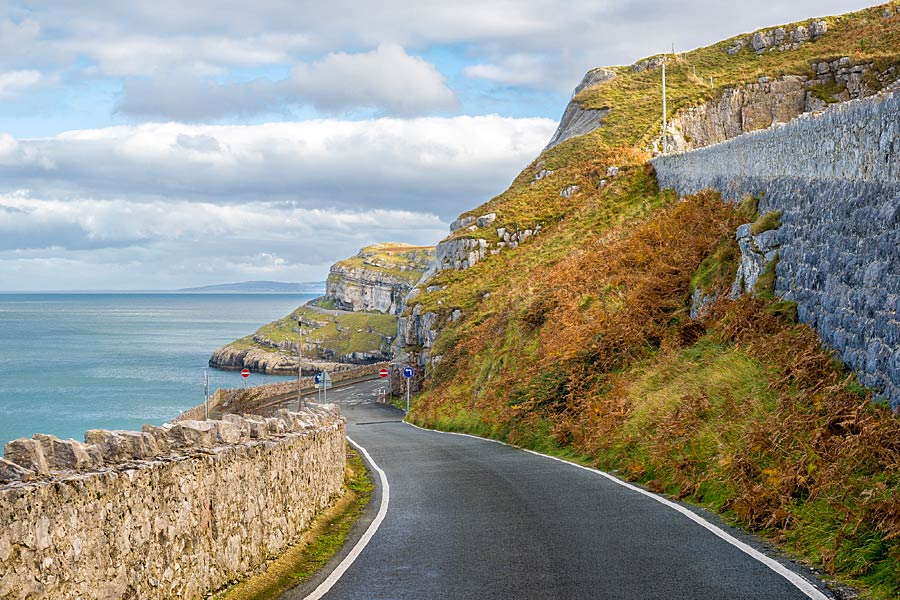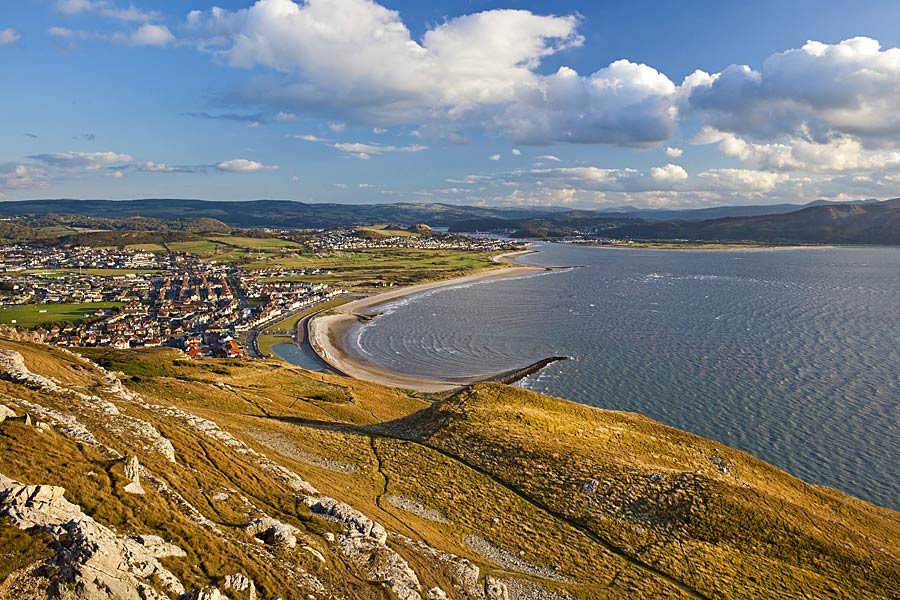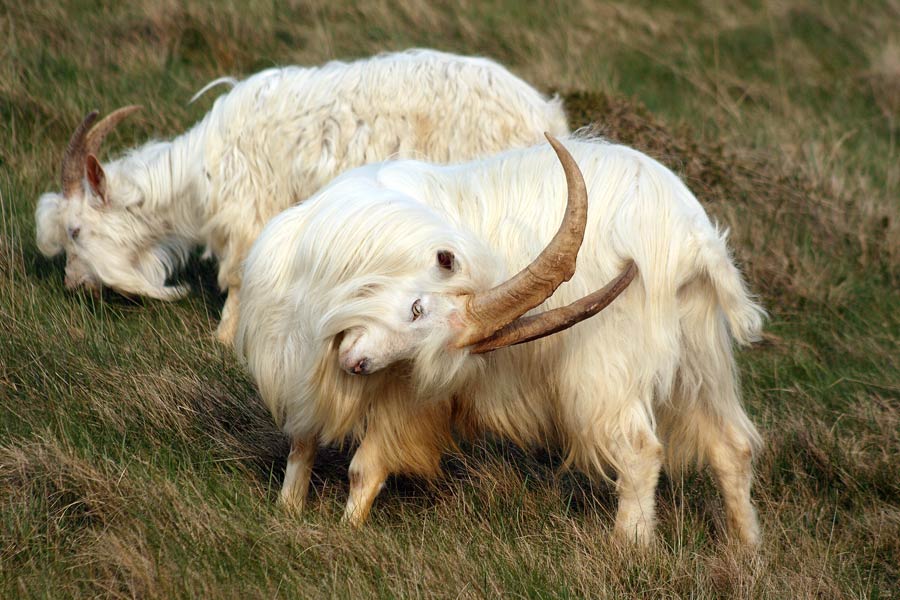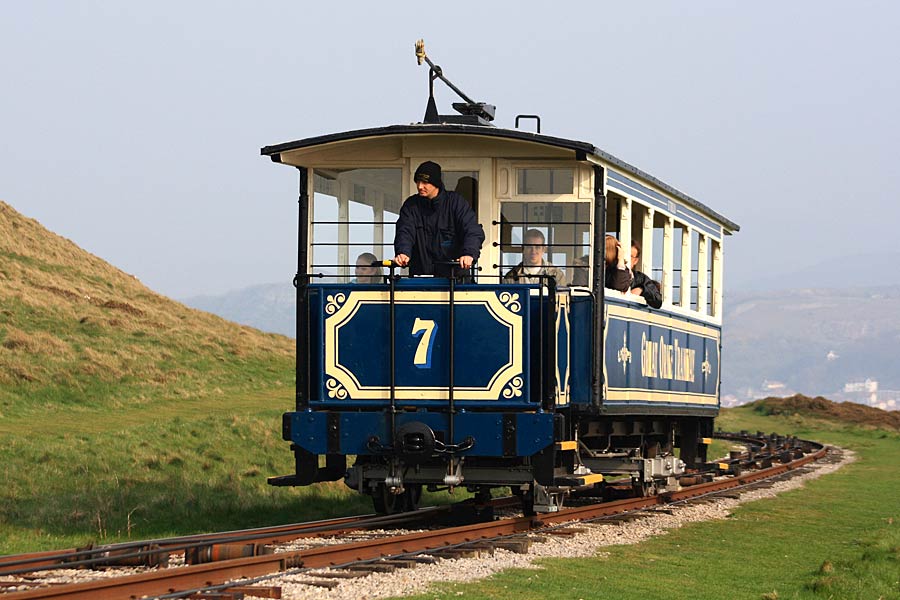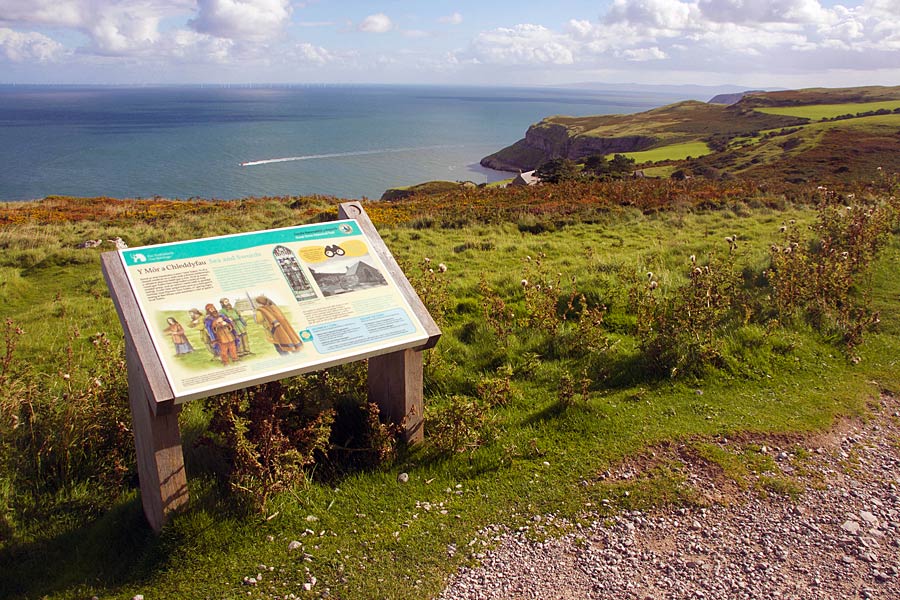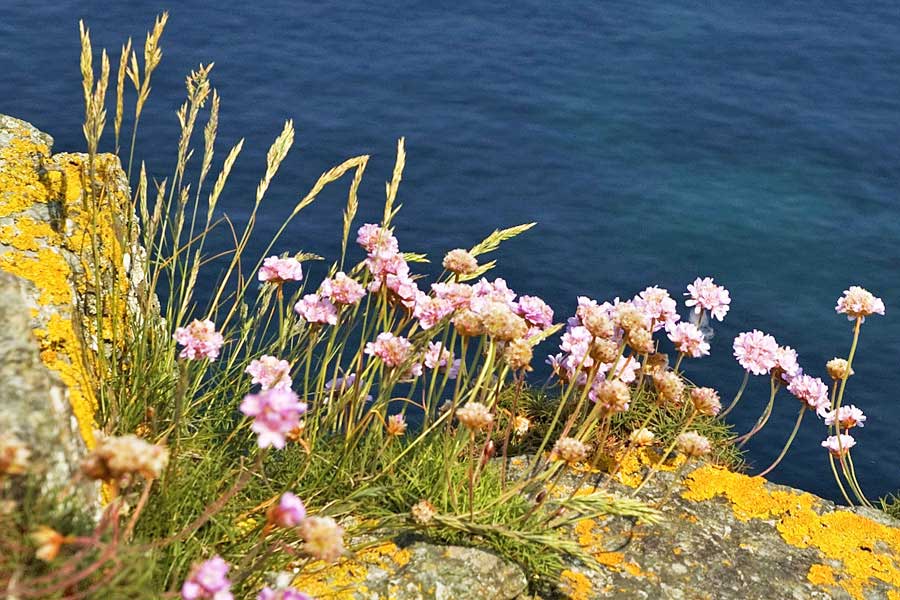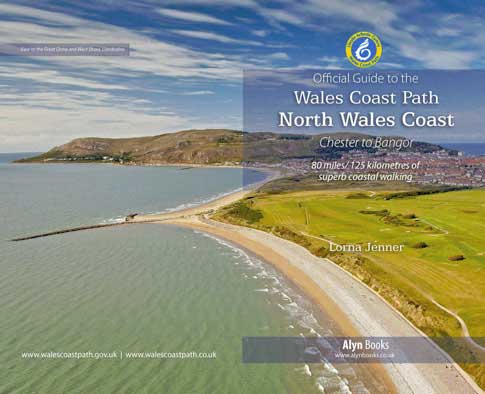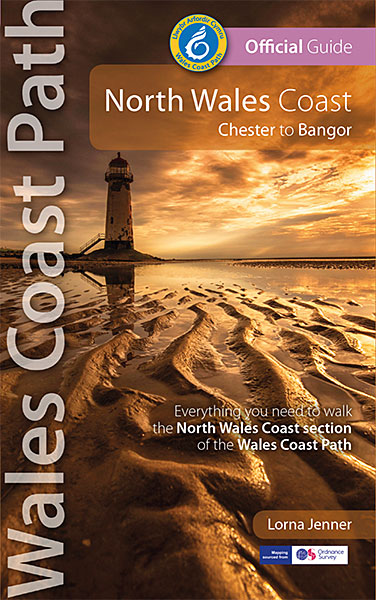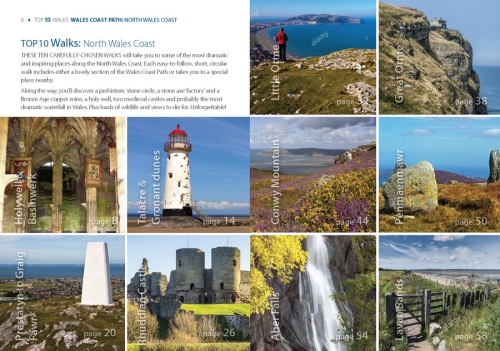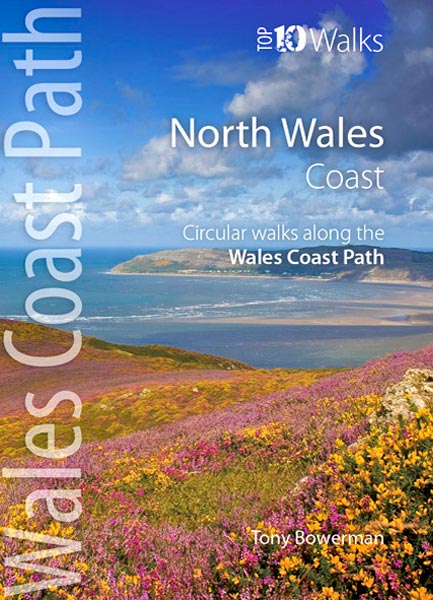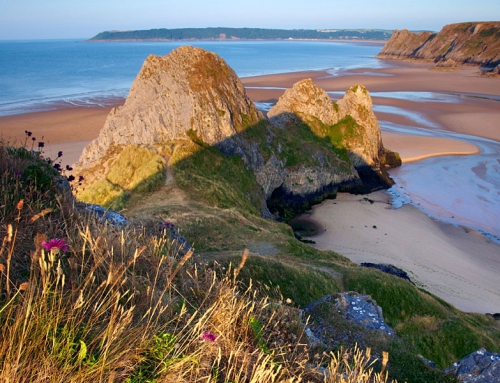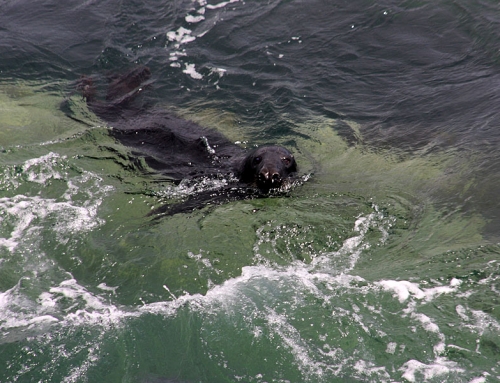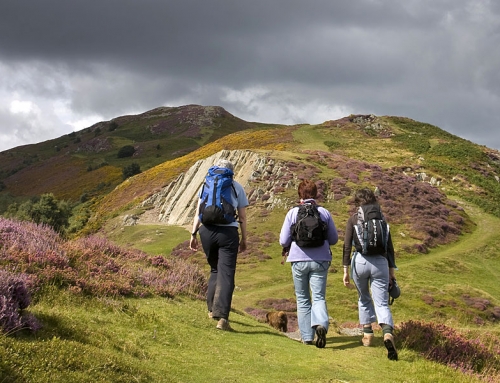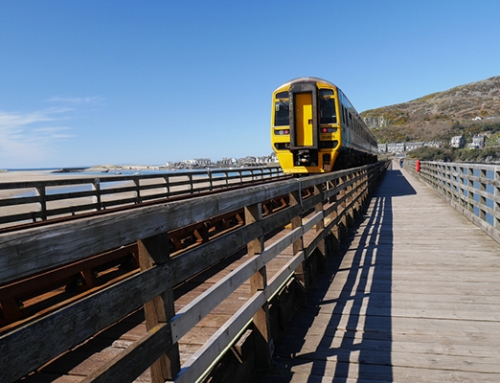The thrilling coast road around the Great Orme – on the Wales Coast Path
The Great Orme is an amazing limestone headland with quirky trams, rare wildflowers and wild goats, says Lorna Jenner
ONE OF THE MOST MEMORABLE SECTIONS OF THE WALES COAST PATH along the North Wales Coast is the stretch between Llandudno and Conwy, going around the massive limestone headland of the Great Orme.
The official Coast Path hugs the coast tightly following Marine Drive, a four mile toll road, around the lower part of the Great Orme
The Drive was originally built in 1878 as a scenic carriage road for the Victorian tourists who were beginning to flock to Llandudno. This route has lots to offer as the ever-changing views are magnificent and walk is along the pavement, making it accessible for all. There is even a good tea-shop, the ‘Rest and be Thankful’, part-way round. However the café name is a reminder that, although this route doesn’t include the steep climb up to the Orme Summit, it still involves some ascent.
Cafe and lighthouse
We first walked it on a very windy day and it was quite hard work so we were truly thankful for the rest at the cafe and enjoyed the cakes as well. Perched on the cliffs just below the café is the former Great Orme’s Head Lighthouse, whose powerful light could be seen from 24 miles away, helping ships navigate the treacherous waters. The disused lighthouse building is now a bed and breakfast – a perfect base if you want to explore for a few days.
The Great Orme is a massive limestone headland, created millions years ago when this part of Wales lay beneath a shallow tropical sea that teemed with life. The limestone was formed from the skeletons and shells of these sea creatures that accumulated on the sea-bed and were compressed over millions of years. You can find many fossils of these creatures in the rocks.
Wild flowers thrive on the thin limestone soils and, during the summer, the grassland is dotted with colour. Look for deep pink bloody cranesbill, yellow rockrose, yellow birdsfoot trefoil, white bladder campion, and meadowsweet with its clusters of tiny cream flowers. On the thin cliff-top soils, blue spring squill, wild thyme and pink thrift thrive. The flowers, in turn, attract numerous insects including many butterflies. The blue butterflies are particularly pretty and in sheltered spots on warm, sunny days you may see large numbers of these tiny butterflies.
Wild flowers thrive on the thin limestone soils and, during the summer, the grassland is dotted with colour.
Rich birdlife
Birdwatchers will be equally satisfied. Looking down from Marine Drive, you will notice numerous sea birds, wheeling round the cliffs below or bobbing on the water. Guillemots, razorbills, kittiwakes, cormorants and fulmars all nest on the cliffs. Ravens, chough (blackbird like but with bright orange legs and beaks and peregrine falcons frequent the more remote cliffs.
In the summer the plentiful insects in the grassland provide food for nesting birds including skylarks, meadow pipits and wheatears. Many other birds pass through on migration in spring and autumn and others overwinter here.
Any description of the wildlife on the Great Orme has to include its largest creature, the Kashmir goats. Introduced about 20 years ago, the herd roam freely across the hillsides and are an impressive sight with their long white coats and large curving horns.
Jutting out into the Irish Sea, the Great Orme can sometimes seem an inhospitable and windswept place but, nevertheless, it has attracted people for thousands of years. Stone Age peoples lived in the caves around the headland, the rich veins of copper ore in the limestone were mined in the Bronze Age and an Iron Age tribe built a hillfort on Pen Dinas, below the main summit (near the ski-slope).
Tiny early church
St Tudno was a 6th century Christian saint who established his first church on the hillside part way up the Great Orme. The present simple church was built in the 12th century and extended in the 15th century when it was the main place of worship for the scattered community. In 1839 the roof was seriously damaged in a storm and it was decided to build a new church nearer the centre of the town rather than repair the old church. It was neglected until a local benefactor funded the repairs and re-opened the little church in 1855.
Llandudno itself began to develop as a popular seaside resort following the opening of the railway in 1848. The building of Llandudno Pier in 1877 brought more visitors, coming by paddle steamer. Attractions and entertainments for visitors on and around the Great Orme soon developed. Happy Valley at the bottom of the hill was developed as gardens in 1887 with miniature golf courses, music and an open air theatre. In 1902, the tramway was opened giving visitors an easy way to get to the summit and it remains a popular attraction today. New attractions have opened alongside the traditional and the Great Orme seems as popular with modern visitors as it was with their Victorian predecessors.

